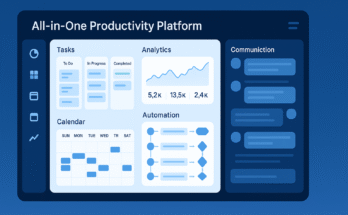The acronymRPAstands for ‘Robotic Process Automation’, or Process Automation through Robotics. It is, in short, an easy-to-use ‘Software’ for anyone who wants to automate digital tasks (predictable, routine, measurable, configurable) of their processes. It is important to note that these automations achieved with RPA to date do not make autonomous decisions by themselves, it is not artificial intelligence, but they can be complemented with other tools that are.
Characteristics of digital tasks for ROI
As mentioned above, it should be emphasized that the tasks to be automated must be:
- predictable
- routine
- Measurable
- configurable
With this it will help us to quantify over time and calculate its return or reconfigure if a variable changes in the process.
Eliminate these 3 assumptions for better automation results
1.Los “Bots” no son solo chats
RPA then enables users using this technology to create software robots or “bots” that can learn, mimic and thenexecuterule-basedbusiness processes by observing the digital actions of humans.
Thus, when executing one of the many processes that an RPA has, showing it what to do, save all the interactions of the human with theSoftware application or applicationsand then another module or process of the RPA does or executes the repetitive tasks of the human in its worked. The RPA can interact with any application or software system in the same way that people do, but where it enhances productivity, because the person no longer needs to wait long and exhausting days because these “Bots” can operate 24 hours a day, 365 days , without stopping, much faster and with 100% reliability and precision.
2.“Bots” are not to replace people
Robotic process automation “Bots” today do not have the same set of skills (talents) as people… they do not reason, they do not analyze, they do not propose, they do not question, they do not innovate; think of RPA “Bots” as a digital workforce that helps, supports, frees up human time, but does not replace it.
Although “Bots” grow day by day in companies, it has not reached the popularity and adaptation that it should have in them because many managers harass changing “Bots” for people. It is clear that the “Bots” can copy and paste, extract Web data, perform calculations, open and move files, search for text in emails, forms and documents, log into programs, connect to API’s and extract unstructured data, send emails emails, attach files, among many other things, but they are not autonomous, they operate under rules that are programmed by the human being. Here then comes an advantage of all of the above, the company can improve times (productivity) with the automation of its workflows, it is not necessary to change its existing systems, applications or business processes in order to perform RPA.
3.Bots are free
RPA “Bots” because they are easy to configure, use and share does not mean that they are all free and do not carry a cost for their implementation. There are many platforms that offer some of their modules free of charge or by number of “Jobs” tasks to execute, other RPA solutions offer them as a service, others are licensed by users, processes or configured or executed tasks, in short, the range is broad where you should think very well about which one to choose according to cost benefit.
As with any technology, adopting RPA at the enterprise level requires an investment of time and resources, as well as a strong commitment to change.
Why should you implement RPA?
Business, process and operations leaders must be convinced that RPA is a determining factor for the long-term success of their organization. The initial approach must be methodical and strategic, it must start in a simple way and without great complications. During the early stages of implementing this technology, avoid installing random applications and focus on automating the most tedious and repetitive tasks.
- For having a high variety of benefits, both qualitative and quantitative, for example, cost reduction, greater precision, speed of delivery and improvement of results for customer satisfaction… because people will be able to dedicate themselves to doing what they do best, solving problems, perform analysis, improve processes, innovate, among other activities that deliver added value to your organization.
- For greater productivity, in some cases acceleration in workflows.
- Greater accuracy because 100% accuracy is guaranteed, there is no need for review and compliance.
- For having a high cost savings and a fast ROI in the execution of processes without errors to obtain the results.
- For having the ability to integrate different platforms, achieving efficiency and collaboration in human capital.
- For being able to deliver better experiences to the client (consumer) when interacting with him through queries and speed in his responses
- For being able to combine AI (Artificial Intelligence) with RPA creating intelligent automation with unstructured data.
- For the ease of scalability with high-volume processes to make them more flexible in uncertain times and changing environments.
From a strategic point of view, a successful long-term adoption of RPA requires a smart approach, focused on choosing the right technologies and being able to implement them quickly. The chosen tools must be powerful and secure enough to satisfy the personnel linked to the process and project.
How to start with an RPA?
An initial phase could be identifying the most rudimentary, repetitive and annoying internal processes. These first automations can offer immediate and measurable results, in addition to overflowing benefits to other processes that the organization may choose to automate in the near future, evidencing the integration and coordination for multiple RPA processes. These individual RPA processes can also be interconnected with various legacy business applications, for example, ERP systems, E-Commerce, CRM, among others.
Phases to contemplate to start an RPA:
- Identification (Exploration), hopefully the first area to impact for the proof of concept or pilot has a high commercial impact, ask many questions and let the staff of the process to impact be the axis of your plans, surely they will be your best agent of change and defender of RPA.
- Preparation, find the sponsor and promoter of the RPA, hopefully one of these two is the one who has influence in the preparation of the budget or project manager.
- Participation or contracting of the RPA provider, the golden rule is to think in the long term because it is a fast-paced market and you must see it as a recurring, close partner that has demonstrated experience and stability where it will be willing to continue adapting and innovating for you, helping you select RPA Software that is not only technically efficient, but also exceptionally intuitive.
- Proof of concept and pilot, the value of the proof of concept lies in seeing if your supposed business cases were correct and testing your implementation model, then incorporating an automated process into day-to-day operations and involving staff from the impacted project or process.
- Create a global center of excellence for adoption at scale focused on effectiveness and governance that helps build your standards and oversight with tools and templates that help other business units start building and optimizing their own automations.
- Promote the expansion and deepening of the use of RPA throughout the organization. RPA as an integral solution.
- RPA is an important factor in digital transformation that should make it part of the organization’s DNA.
Where to use RPA?
It is worth mentioning some solutions, because there are many delivered in different types of organizations and sectors:
- Automation with browsers / web browsers
- Automatic file conversion
- Mortgage Processing Automation
- Automated data extraction
- Automated inventory management
- Payroll settlement management
- Management of accounting closings
- Automated integration with ERP
- Automated application integration
- File Transfer Automation
- Automated user provisioning
- Automated generation of reports (reports)
- Business process automation
- Robotic Process Automation
- Automation of cognitive processes
Benefits of RPA
RPA as a lever and the first turning point for digital transformation in an intelligent business environment based on automation and generator of digital culture is where we have the premise of “Doing more with less effort” to:
- lower cost
- greater opportunity
- Higher quality processes
- Higher quality of life
Quality: Do not automate processes with errors because I automate errors, I know before doing data reengineering, real mining, data analysis.
conclusion
Adopting RPA does not have to arouse fear or think about great efforts. It should be thought of as any procedural change or optimization protocol for success to help meet the strategic focus of the business.
Companies that adopt this technology will obtain significant advantages over their competitors. Choosing the right tools, with maximum safety and power, is undoubtedly a first step. But even more important is to select those products that can become fully operational in a very short time.
As these technologies continue to advance in functionality, exciting new innovations in automated processes will emerge, both from the makers of RPA solutions and from the pioneering organizations that use them.




